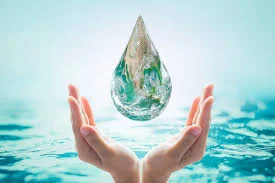How Can We Save Water: A Comprehensive Guide with Tips and Tricks
Introduction
Water is one of the most precious resources on our planet. It sustains life, supports ecosystems, and is essential for countless human activities. However, the availability of fresh, clean water is dwindling due to a variety of factors, including overuse, pollution, and climate change. As responsible stewards of our environment, it is our duty to conserve this vital resource for current and future generations.
In this comprehensive guide, we will explore the various ways in which we can save water in our daily lives. From simple tips for reducing water wastage to more advanced techniques for efficient water management, we will cover it all. By implementing these strategies, you can make a significant impact on water conservation and help secure a sustainable future.
Section 1: Understanding the Importance of Water Conservation
1.1. The Global Water Crisis - Overview of the current state of global water resources. - The implications of water scarcity on communities, ecosystems, and economies.
1.2. The Role of Individual Actions - Explaining how individual choices and behaviors can contribute to water conservation. - Motivating individuals to take responsibility for their water usage.
Section 2: Reducing Indoor Water Consumption
2.1. Fixing Leaks - Identifying and repairing common household leaks. - Calculating the potential water savings from fixing leaks.
2.2. Installing Water-Efficient Appliances - Choosing low-flow faucets, showerheads, and toilets. - The benefits of high-efficiency washing machines and dishwashers.
2.3. Practicing Water-Smart Behaviors - Tips for reducing water wastage while doing everyday tasks like washing dishes and doing laundry. - The importance of turning off the tap while brushing teeth and lathering hands.
2.4. Harvesting Rainwater - Setting up a rainwater harvesting system for outdoor use. - Creative uses for harvested rainwater in gardening and landscaping.
Section 3: Outdoor Water Conservation
3.1. Xeriscaping and Drought-Tolerant Landscaping - Designing a water-efficient garden using native plants. - Mulching and soil improvement techniques to reduce outdoor water needs.
3.2. Smart Irrigation Practices - The benefits of drip irrigation systems and smart sprinklers. - Setting up irrigation schedules based on weather conditions.
3.3. Lawn Care with Less Water - Alternative lawn care methods that require less water. - Transitioning to synthetic turf or other water-saving alternatives.
3.4. Pool and Hot Tub Management - Strategies for minimizing water loss in pools and hot tubs. - Using pool covers to prevent evaporation.
Section 4: Water Conservation in the Kitchen
4.1. Efficient Dishwashing - Hand washing vs. dishwasher efficiency. - Tips for loading the dishwasher optimally.
4.2. Conserving Water While Cooking - Minimizing water usage when preparing meals. - Creative ways to reuse cooking water.
4.3. Managing Food Waste - The water footprint of food production. - Reducing food waste to save water.
Section 5: Sustainable Bathroom Practices
5.1. Low-Flow Fixtures - Choosing efficient toilets, faucets, and showerheads. - The water-saving potential of dual-flush toilets.
5.2. Shortening Shower Times - Encouraging shorter showers without sacrificing hygiene. - Installing shower timers to track usage.
5.3. Waterless Toilets and Urinals - How waterless toilets work and their environmental benefits. - Considerations when installing waterless toilets.
Section 6: Industrial and Agricultural Water Conservation
6.1. Water-Saving Technologies - Overview of advanced technologies for industrial water management. - The benefits of water recycling and reuse systems.
6.2. Sustainable Agriculture - Practices for reducing water usage in farming. - Drip irrigation, precision agriculture, and crop selection.
Section 7: Community and Policy Initiatives
7.1. Community Water Conservation - Encouraging water-saving behaviors in your community. - Organizing local water conservation events and initiatives.
7.2. Government Policies and Incentives - The role of government in water conservation. - Available incentives and regulations to promote water efficiency.
Section 8: Conclusion and Call to Action
8.1. The Urgency of Water Conservation - Summarizing the importance of water conservation in the face of global challenges. - The potential impact of individual and collective efforts.
8.2. Taking Responsibility - Encouraging readers to make a personal commitment to water conservation. - The power of spreading awareness and inspiring others.
By the time you finish reading this comprehensive guide, you will be equipped with the knowledge and practical tips to make a significant difference in water conservation. Remember, every drop counts, and together, we can safeguard this precious resource for future generations.


Post a Comment